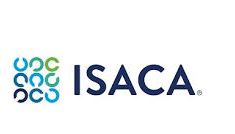
Bengaluru, India,24th January 2024: From India’s Personal Data Protection Bill to Brazil’s General Data Protection Law, the past year saw new developments and updates to privacy regulations across the globe. According to ISACA’sPrivacy in Practice 2024 survey report, half (51 percent) of the India-based respondents say their organizations find it easy to understand their privacy obligations, and a majority (62 percent) are very or completely confident in their organization’s privacy team’s ability to ensure data privacy and achieve compliance with new privacy laws and regulations.
More than 1,300 professionals globally, including 71 from India, who work in data privacy roles responded to the survey, weighing in on privacy topics such as staffing, organization structure, policies, budgets and training.
Privacy Challenges
In addition to finding it easy to understand the privacy regulatory landscape, organizations in India also feel that the budget is currently mostly appropriate. More than half of respondents (51 percent) say their privacy budget is appropriately funded and only 23 percent say their budget is somewhat or significantly underfunded. When looking at the year ahead, 42 percent say that they expect their budget will increase (down 20 points from last year), and only 1 percent say it will remain the same (down 8 points from last year). However, a third of respondents (32 percent) expect a decrease in budget, which is higher than last year, when only 6 percent expected a decrease in budget.
The path to forming a privacy program is not always a smooth one, either, with Indian respondents indicating that the top obstacles include:
-
• Lack of competent resources (44 percent)
• Complex international legal and regulatory landscape (35 percent)
• Management of risks associated with new technologies (35 percent)
• Lack of clarity on the mandate, roles, and responsibilities (34 percent)
In seeking those competent resources, technical privacy positions are in highest demand, with 75 percent of Indian respondents indicating there will be increased demand for technical privacy roles in the next year. Legal/compliance roles come a close second with 73 percent feeling that there will be increased demand. However, respondents indicate there are skills gaps among these privacy professionals; they cite experience with different types of technologies and/or applications (58 percent) as the biggest one.
When looking at common privacy failures, respondents in India pinpointed the non-compliance with applicable laws and regulations (44 percent), data breach/leakage (42 percent) and not practicing privacy by design (41 percent) as the main concerns.
“When privacy teams face limited budgets and skills gaps among their workforce, it can be even more difficult to stay on top of ever-evolving and expanding data privacy regulations and even increase the risk of data breaches,” says SafiaKazi, ISACA principal, privacy professional practices. “By understanding where these challenges lie, organizations can take the necessary measures to remedy them and change course to strengthen their privacy teams and programs.”
Taking Action
One of the ways that organizations are mitigating both workforce gaps and privacy failures is through training. A majority of India-based respondents (61 percent) note they are training to allow non-privacy staff to move into privacy roles, while 45 percent have increased reliance on credentials to attest to actual subject matter expertise.
To assess the effectiveness of privacy programs, survey respondents in India note their organizations are most often taking the approach of: –
• Performing a privacy risk assessment (68 percent)
• Performing a privacy impact assessment (PIA) (61 percent)
• Undergoing a privacy audit/assessment (46 percent)
• Performing a privacy self-assessment (41 percent)
Global Insights
With employee training, 86 percentglobally indicate their organization provides privacy awareness training for employees, with 66 percentare providing training to all employees annually, and 52 percent of global respondents are providing privacy awareness training to new hires.Sixtypercent of organizations review and revise privacy awareness training at least annually. Seventy-one percent believe that privacy training has had a strong or some positive impact on privacy awareness in the organization. Interestingly, respondents note that their organizations are most often looking at the number of employees completing training (65 percent) as the main metric used to track effectiveness of privacy training and not a decrease in privacy incidents (56 percent).
Organizations are also taking action to strengthen data privacy by using a variety of privacy controls beyond what may be legally required, with the top three globally being identity and access management (74 percent), encryption (73 percent), and data security (72 percent).
Despite the challenges faced, 63 percent of global organizations say they did not have a material privacy breach in the past 12 months, and 18 percent are not seeing a change in the number of breaches they are experiencing. Respondents are also optimistic about the coming year: less than 1 in 5 (16 percent) say they expect a material privacy breach in the next 12 months.
Value of Privacy by Design
One of the clearest takeaways from the survey results is that globally, organizations that practice privacy by design experience some key advantages:
• They have more employees in privacy roles (median staff size 15 vs. nine among all respondents) and are more likely to say their technical privacy department is appropriately staffed (42 percent vs. 34 percent among all respondents).
• They strongly believe their board of directors prioritizes organization privacy (77 percent vs. 57 percent total).
• They are much less likely to see organizational privacy programs as purely compliance driven (35 percent vs. 44 percent total), and more likely as a combination of compliance, ethics and competitive advantage (39 percent vs. 29 percent total).
• They are much more likely to see their organization’s privacy strategy aligned with organizational objectives (90 percent vs. 74 percent total).
• They use many more privacy controls in total, overall, than are legally required:
o Data minimization and retention controls (54 percent vs. 39 percent among all respondents)
o Data quality and integrity (50 percent vs. 38 percent)
o Cryptographic protection (59 percent vs. 46 percent)
• Feel their privacy budget is appropriately funded (50% vs. 36% total)
Ultimately, organizations globally that always practice privacy by design are also much more likely to be very or completely confident in their organization’s privacy team’s ability to ensure data privacy and achieve compliance with new privacy laws and regulations (71 percent versus 43 percent).
“As privacy regulations world over continue to evolve, it’s promising to see the growing confidence among Indians in overcoming issues. ISACA’s survey clearly shows that organizations today are more adept at understanding their privacy obligations and are also confident in the ability of their teamsto ensure compliance and data privacy,” says R.V. Raghu, ISACA India Ambassador, and Director, Versatilist Consulting India Pvt Ltd. “However, the anticipated shifts when it comes to budgetary expectations show that it is important for companies to strategically enhance their resource allocation, especially with impending financial constraints.”
Recently, ISACA explored other privacy themes in new white papers. Eliminating Deceptive Privacy Practices: Building Trust by Addressing Privacy Dark Pattern explores the problematic nature of dark patterns and strategies that can be used to replace them for consumer-centric alternatives. Applied Data Management for Privacy, Security and Digital Trust examines the connection between privacy and data management and how privacy and security can support digital trust, and educates readers on building and maintaining a data management program that works for their needs.
The Privacy in Practice 2024 survey report is complimentary and can be accessed at www.isaca.org/privacy-in-practice-2024Additional privacy resources can be found at: www.isaca.org/resources/privacy.
###

